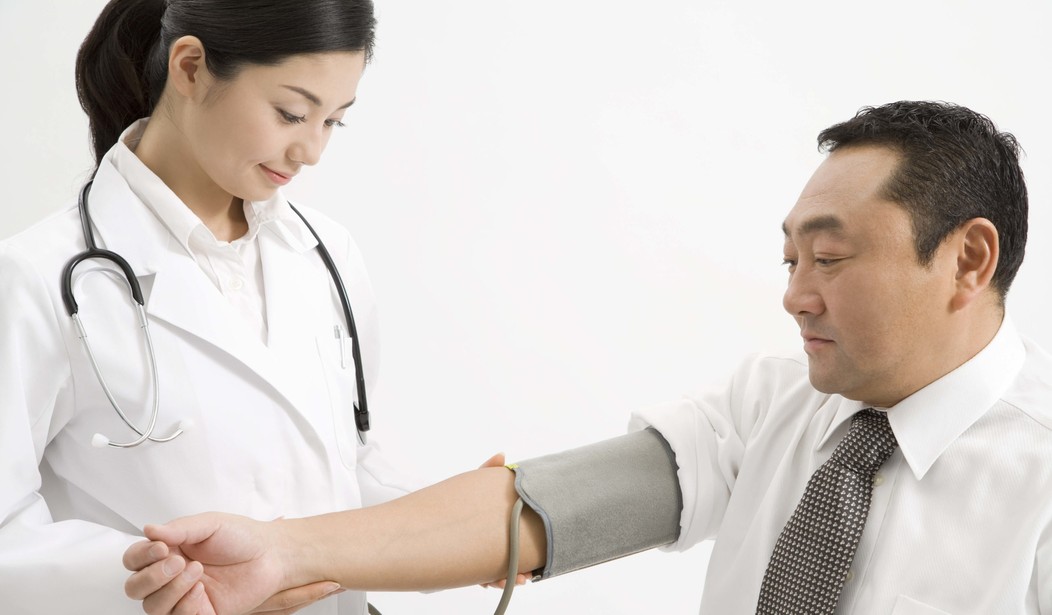The late Duchess of Windsor said that you can never be too thin or have too much money. But can you have a blood pressure that is too low?
The strange thing is that, after thousands or even hundreds of thousands of scientific papers about hypertension and its treatment, doctors still do not know what blood pressure they should aim for when treating patients with high blood pressure. We know that blood pressure when high should be lowered, but by how much? I even remember, in the dim and distant past, some physicians arguing that the blood pressure of the elderly hypertensive should not be lowered because their bodies had readjusted to a higher pressure and to lower it would cause them problems, including strokes.
A paper in a recent edition of the New England Journal of Medicine sets out to answer the question of how far blood pressure should be lowered. They allocated 9361 patients at random to be treated either in currently standard fashion (i.e., aiming for a systolic blood pressure below 140 millimeters of mercury) or intensively (i.e., aiming for a systolic blood pressure below 120 millimeters of mercury). The trial was stopped earlier than expected because the results were clear-cut: intensive treatment saved lives.
The patients who were enrolled on the trial had to be over 50 years of age, with a systolic blood pressure of 130 to 180 millimeters of mercury, and with an increased calculated risk of “cardiovascular events” (stroke or heart attack). They were not diabetic, and had no history of stroke. I must confess to a slight puzzlement about the inclusion in the enrollment of those with systolic blood pressures of between 130 and 139 millimeters of mercury because that pressure is the level aimed at by standard treatment. In other words, they required no treatment for the target to be reached. But the authors of the paper do not comment on this.
The two groups of patients were compared as to the number of heart attacks or strokes that they had during the study period (originally designed to be 6 years), heart failure, and death from all causes.
The patients given the “intensive” treatment (in practice the addition of one extra anti-hypertensive medication) had 243 heart attacks or strokes, while those given standard treatment had 319, and this difference was very unlikely to have arisen by chance. There were 155 deaths in the intensive treatment group and 210 in the standard treatment group. The difference in mortality between the groups manifested itself at approximately 2 years of treatment. Another way of putting this is that 90 people would have to be treated intensively for 2 years to save one life as compared with standard treatment.
Since intensive treatment consisted only of taking one extra medication, this might seem to be worthwhile. There is, however, a very slight caveat. The intensively treated group had more serious side effects of treatment than those treated in the standard way, 4.7 percent of them as against 2.5 percent. In addition, their kidney function deteriorated more, whether permanently or temporarily is not known. If the damage was permanent, it might later reverse the advantages of intensive treatment. As so often happens, the evidence is inconclusive.
Two figures in the paper caught my attention, only the first of which was commented on by the authors. The first is that only half of patients in America under treatment for hypertension achieve a systolic pressure of below 140 millimeters of mercury. There is still obviously much to be done in this respect. And the second is that the average body mass index of the patients was nearly thirty: that is to say the average patient was bordering on obese.








Join the conversation as a VIP Member